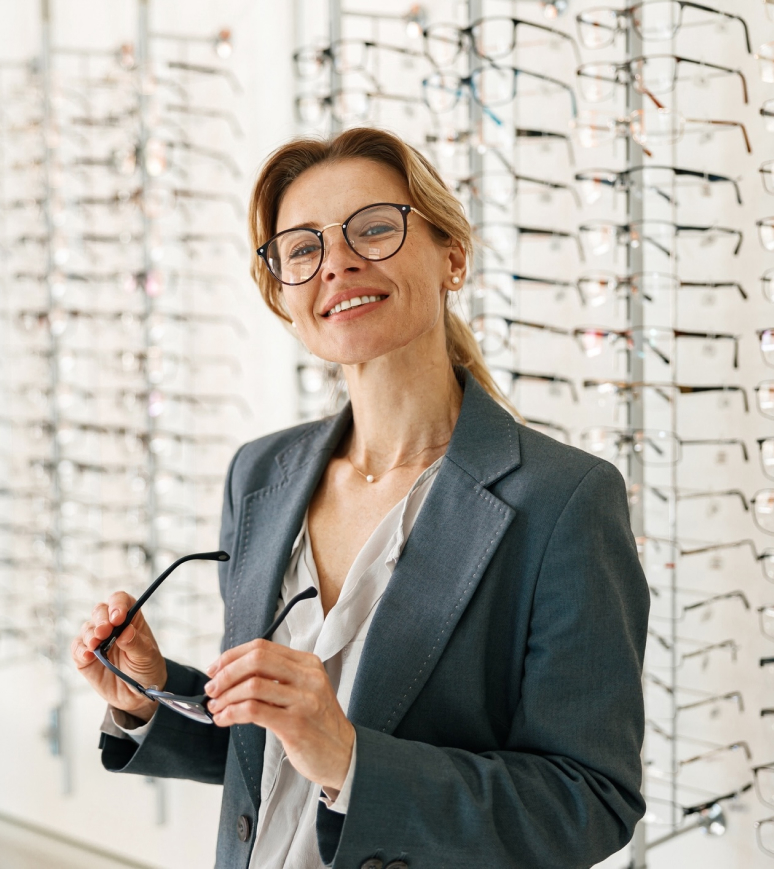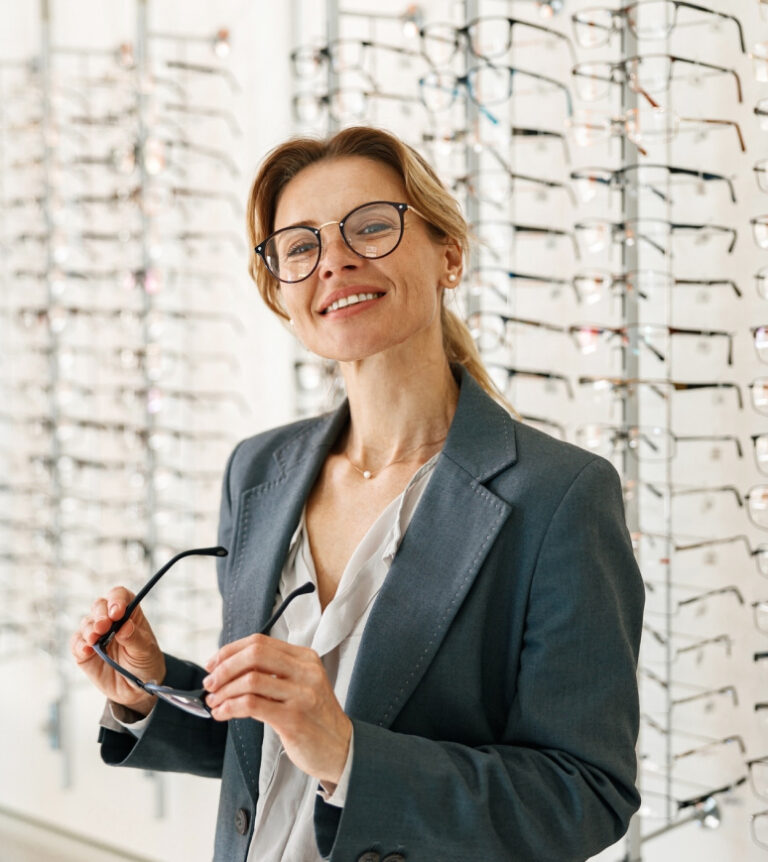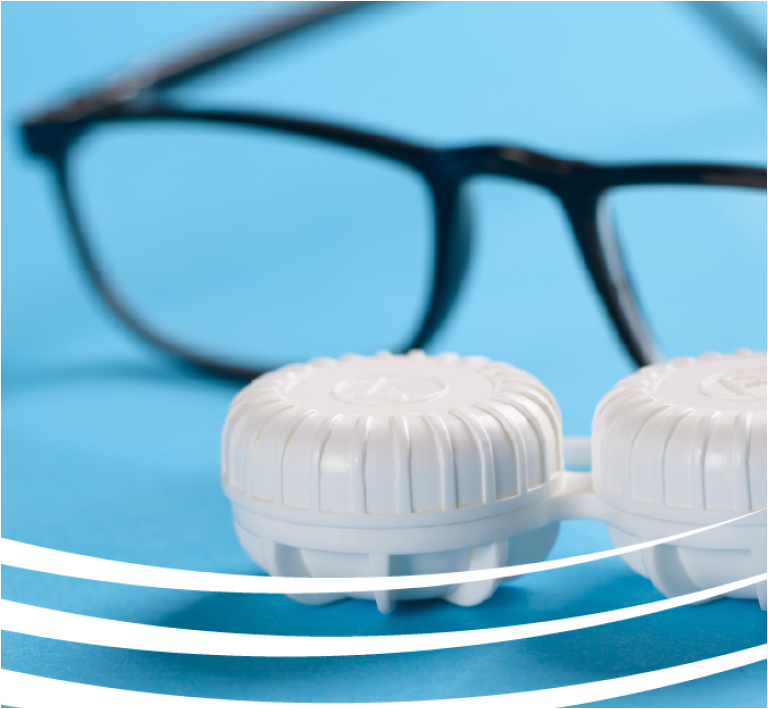


See Clearly With Personalized Glasses and Contacts From Professional Eye Associates
The perfect eyewear is more than just seeing clearly; it’s about enhancing your comfort, your personal style, and your confidence. At Professional Eye Associates, we offer a wide selection of eyeglasses, contact lenses, and vision correction solutions, as well as personalized, hands-on care to meet your unique needs.
With our expert team guiding you every step of the way, you’ll enjoy a seamless, stress-free experience as you explore your vision correction options. Schedule your eye exam for glasses and contacts at one of our on-site optical centers, and discover world-class, customized vision care in Northwest Georgia.


Explore Glasses and Contacts Customized for Your Vision Needs and Style
Our skilled optometrists offer a wide range of customized vision solutions to meet your unique needs. Whether you prefer the classic style and durability of eyeglasses or the convenience of contact lenses, our expert team is here to help you find the perfect fit. With personalized recommendations and access to the latest in lens technology, you’ll enjoy crystal-clear vision tailored to your lifestyle.

Choosing the Right Eyewear for You
Choosing the right pair of glasses can feel overwhelming with so many styles, lens options, and brands to consider.To get personalized advice and recommendations on lens types and features, frame styles and shapes, and much more, you will be guided to answer questions using our new EyeGlass Guide. We can then use the results to help you select the perfect pair of glasses. This is just another way our optometrists take the time to understand your vision requirements, lifestyle, and personal preferences.
Whether you’re looking for durable everyday wear, something stylish for special occasions, or specialty lenses, we’re here to guide you every step of the way. Your perfect vision starts here – Schedule today!
Protect Your Glasses and Contacts With Professional Eye Associates
At Professional Eye Associates, we understand that life happens. Whether it’s a broken frame, scratched lenses, or an updated prescription, we’ve got you covered. We stand behind the quality of our eyewear with a comprehensive two-year protection plan that includes:
- Frame Replacement: If your frame breaks due to a manufacturer’s defect, we’ll replace it at no cost. If the frame has been discontinued, we’ll provide an equivalent option.
- Lens Replacement: Do your lenses have chips or scratches from normal wear and tear? We’ll replace them free of charge with the same style and material.
- Prescription Changes: If your prescription changes within 90 days of your original purchase, we’ll remake your lenses one time at no additional cost.
- Complimentary Adjustments: Enjoy free eyeglass adjustments for as long as you own your frames.
Please note that this warranty does not cover loss, theft, neglect, or mistreatment of eyewear. All broken parts must be returned, and any application of glue will void the warranty.



Visit Our On-Site Optical Centers for Personalized Glasses and Contacts
When you choose Professional Eye Associates for your glasses or contacts, you’re choosing a team of expert eye doctors and specialists dedicated to providing exceptional, personalized care. From expert fittings and precise adjustments to the latest lens technology, we’ll ensure your eyewear meets your needs with unmatched comfort and clarity.
Visit one of our on-site optical centers in our Dalton, Calhoun, Chatsworth, or Fort Oglethorpe offices to get precision prescriptions and explore our wide selection of frames and lenses. Ready to get started? Schedule your glasses appointment today, and discover why Professional Eye Associates is trusted for vision care across Northwest Georgia.